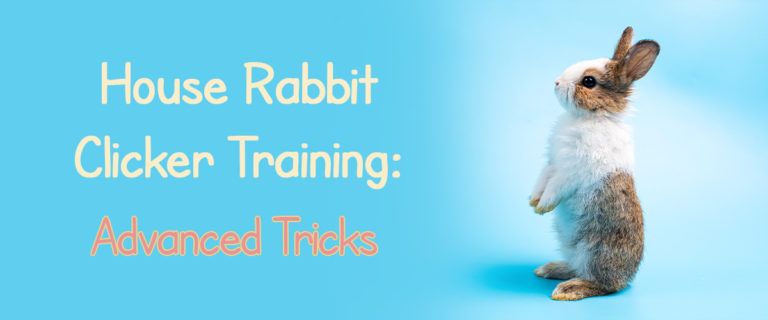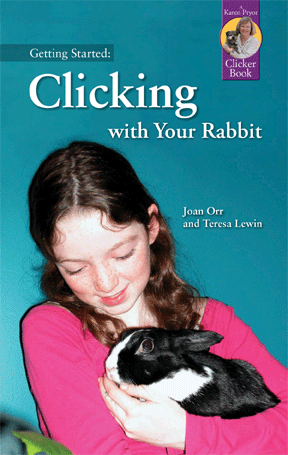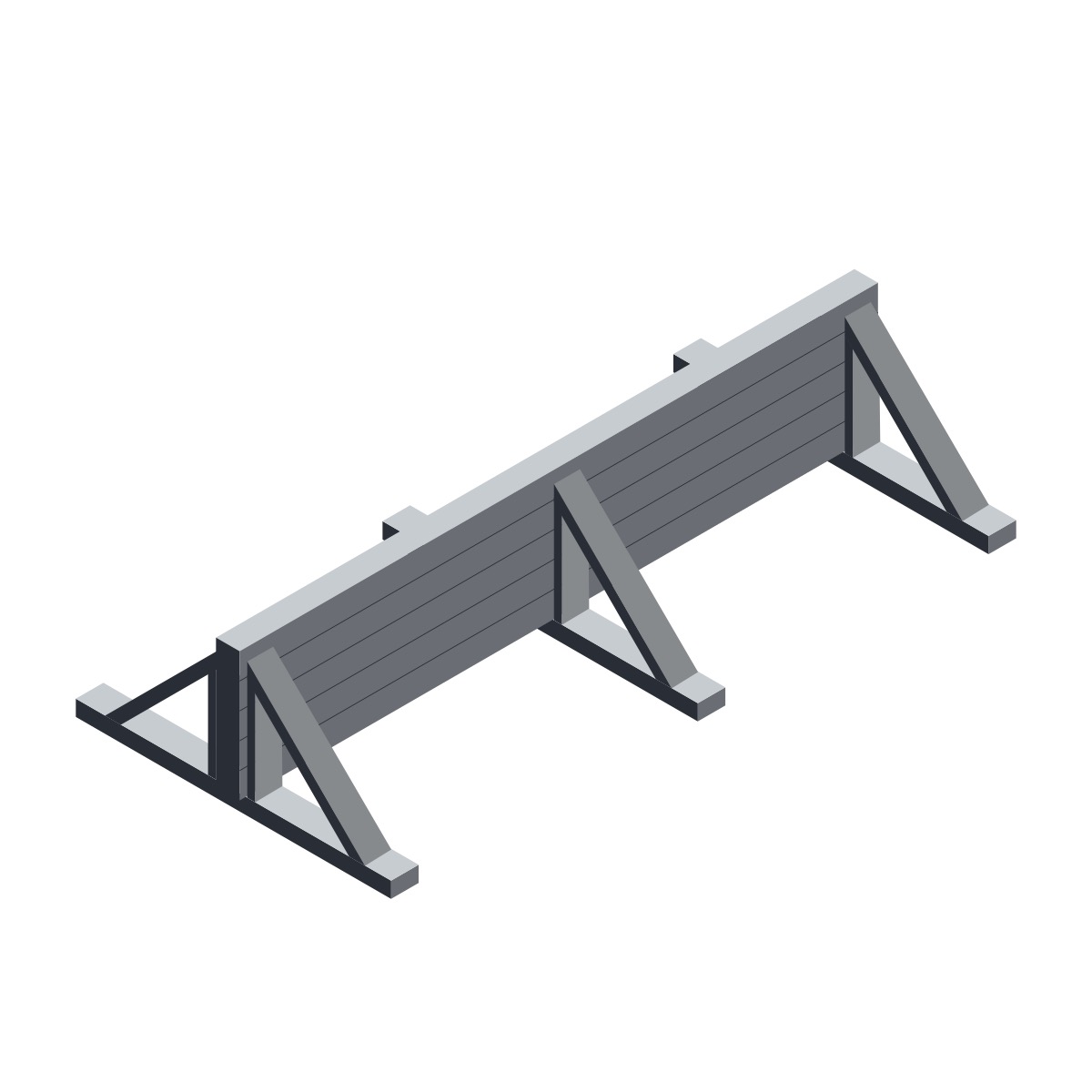With special thanks to Wolf, Joan Orr; and Teresa Lewin
Part of this text is an excerpt from Chapter 3 of “Getting Started: Clicking with Your Rabbit” by Joan Orr and Teresa Lewin. Click this link to purchase the book on Amazon. You can also visit their website, clickerbunny.com.
Welcome to the final blog in the House Rabbit Clicker Training series. Your rabbit feels safe and comfortable in the training environment. You know her favorite food treats and have taught her that the click means fantastic things for bunnies! Now you’re ready to up your clicker training game. We’ve got two kinds of advanced tricks: Target Training and Agility Training/Obstacle Courses.

2017 House Rabbit Society Educator's Conference: Allison Giese - Rabbit Agility and Clicker Training
Target Training
We’ll begin with an easy house rabbit clicker training trick that can be used to teach many others: touching a target. This behavior aims to teach your rabbit to touch a specific object, i.e., the target, with his nose. Once the bunny reliably touches a target and then follows the target, you can direct him from place to place and teach him various other things. Target training first requires a suitable target, something large enough for the pet to see. The target can be your hand or any object you hold in your hand or placed in the rabbit's training area. For example, a plastic margarine lid works well for a bunny.
- Place the target on the ground near the rabbit and make sure it’s large enough for them to see. Rabbits are foragers and are more likely to investigate something on the ground rather than something in your hand. Don't push the target close up to your bunny's face. This may offend him, and he may avoid the target after that. Instead, click and treat when he wanders near the target. Each time the rabbit goes near, click and treat (C/T). Wait until the pet comes slightly closer to the object with each repetition to win a click and treat. If the pet does not go near the object, try this exercise in a smaller area with less space to move around. Additionally, in a smaller space, the bun has fewer activity choices. The rabbit will investigate a new object in his home. Eventually, the rabbit will touch the object on purpose or by accident. Try to click precisely when that touch happens. Give a top-tier treat for this first touch and for the following few touches. Then, deliver the treat away from the target. Therefore, the rabbit has to go back to the target to get another C/T.
- Once the rabbit is touching the target, hearing the click, and coming back to you for a treat each time, move the target an inch to a different spot on the ground. Repeat several times.
- When he intentionally and actively touches the target, try holding it in your hand, moving it slightly each time, and repeating the steps. Hold the target to the side of the rabbit. You shouldn't put it in front of the rabbit since a rabbit’s eyes are on the sides of the head and do not see things too close in front of them
- You can now begin to add the cue:
- Say “Touch” as the rabbit touches the target, C/T for the touch.
- Present the target at various locations a few inches away from the rabbit. Say "Touch" as he touches the target, C/T for the touch.
- Say "Touch" as you present the target, and before the rabbit touches, C/T for the touch. Repeat three times.
- Try giving the cue before the rabbit moves to touch the target and wait to see if she responds. If not, go back to a previous successful point in the house rabbit clicker training sequence and do more repetitions.
Agility Training/Obstacle Courses
Pets that have learned some basic clicker tricks can learn to run an obstacle course. This activity can become so fun for the pet that it will run the course on its own every chance it gets. The obstacles can be almost anything. You can make your own from things around the house or get parts from a hardware store. Finally, the obstacles must be safe for the pet and the right size for the pet. Anything that the pet can over around or through safely is suitable. So use your imagination, consider your pet's physical abilities, and have fun making up your obstacle course.
Technique #1
Teach the last part of the house rabbit clicker training sequence first. This is called back-chaining as the last part of the chain is taught first. Then, teach the second last part and so on until the beginning is taught at the end. This method is effective because when the pet executes the chain, it is always progressing towards the part it knows the best.
- Put the rabbit on a special mat with a cardboard house and her litter box. Eventually, she will wander into the house and get a C/T.
- The rabbit will start going into the house more and more often and more and more enthusiastically, racing back each time for her treat. Add the cue “go home” when you know she is going home anyway. Next, give your rabbit the “go home” cue before she starts going home. Soon, change your reward and only reward your bun when she hears the signal "go home" and not whenever she just went anyway.
- Place a tunnel in front of the entrance to the house. This forces your bun to go through the tunnel to go home. Give her the "go home" cue, and she should run through the tunnel and home.
- Start clicking when she is in the tunnel and giving the cue "go under" simultaneously. Soon you can say “go under,” and she will go through the tunnel and into the house. Then, you can start moving the tunnel further and further from the house. Once she's mastered the last step, you can put the tunnel back at the entrance to the house and put a bridge before the entrance to the tunnel. Repeat the same steps with the bridge or any other new obstacle.
Technique #2
It may be that your obstacle course cannot be moved around easily enough to use the method described above. Andrea Bratt-Frick of BUNS rabbit shelter has taught many rabbits to run obstacle courses. She uses a slightly different form of back chaining. Andrea sets up a few low hurdles and C/T s for any jumping over the hurdles.
- If the rabbit doesn’t jump on its own at first, Andrea uses a target to get them jumping.
- Next, she raises the hurdles a little and mover them around so that the rabbit gets the idea of jumping under any circumstance.
- Next, she sets up the last obstacle on the course and starts with the rabbit going in the reverse direction and then back again.
- Andrea adds another obstacle and again starts the rabbit at the end of the course going in reverse sequence and then back again. This way, if the rabbit gets worried, it will go back the way it came quickly and can receive a C/T for completing part of the course.
- When finished with the house rabbit clicker training course, C/T. C/Ts can also come partway through to keep things interesting for the rabbit. Andrea gradually adds hurdles, tunnels, a water barrier, and ramps to complete the course. Each time a new obstacle is added, the bunny learns about it by itself before it is put into the chain.
How did your bun do? Got a bunlympian on your hands? We hope you enjoyed this final blog on advanced house rabbit clicker training. We've listed the links to the first two blogs below. Please share any rabbit training successes you have on our social media pages or email them to hoomans@smallpetselect.com.
DISCLAIMER: The links and information are being provided as a convenience and for informational purposes only; they do not constitute an endorsement or an approval by Small Pet Select of any of the products, services or opinions of the corporation or organization or individual.
Want to learn more about rabbits? Check these out!
House Rabbit Clicker Training: Why Teach Your Bun?
House Rabbit Clicker Training: Step-by-Step
IMPORTANT WARNING: Plan for Long Emergency Pet Medical Care Wait Times









